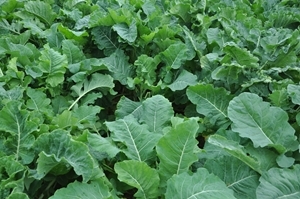 There is increasing pressure for agri-environment schemes to deliver greater benefits and farmland to provide more food. Therefore if the value of agri-environment schemes could be extended to support additional species, provide extra functions such as reducing soil erosion and generating nitrogen, and improve the overall quality, less land would need to be taken out of production.
There is increasing pressure for agri-environment schemes to deliver greater benefits and farmland to provide more food. Therefore if the value of agri-environment schemes could be extended to support additional species, provide extra functions such as reducing soil erosion and generating nitrogen, and improve the overall quality, less land would need to be taken out of production.
For many species of our declining farmland wildlife it is a shortage of plant and insect food that is limiting their numbers. As well as food, insects perform vital roles on farmland, including pollinating crops and helping to control crop pests, so we need to encourage them by planting appropriate mixes that may include legumes.
Since 2009 we have been working in partnership with Conservation Grade and Kings Game Cover and Conservation Crops to develop multi-functional wildlife crops and produce them in a more integrated way, reducing the need for agrochemicals. We tested a wildlife crop rotation of a grass and legume mix across different soil types, aimed to support bees, butterflies and insect chick-food; generate soil nitrogen; and inhibit noxious weeds. This was followed by two years of a wild bird seed mix that would provide seed and insect food for birds and cover in winter. The grass legume mix was made up of two grasses (meadow fescue and timothy), four clovers (red, alsike, crimson and white), bird’s-foot trefoil, sainfoin, early English vetch, yellow trefoil and lucerne.
Conservation Grade’s technical manager Brin Hughes explains: “This complex mix was designed to support both short- and long-tongued bees and butterflies, and have a long flowering period. Then when it was destroyed, it would release the nitrogen slowly.”
The wild bird seed mix included kale, as this has been shown in our previous research to benefit from up to 90kg of nitrogen, easily achievable from a legume ley, therefore saving on fertiliser costs.
Main results
- On the clay soils, little extra soil nitrogen was detected after the two-year legume ley, however on the sandy soils there was on average an extra 65kg of nitrogen per hectare, with a maximum of 188kg of nitrogen per hectare. In one year heavy rainfall destroyed the ley, so in future years we will sow legumes within the wild bird seed mixture, as many legumes leak nitrogen while they grow.
- The diversity and abundance of wild bees was higher in the legume ley compared with nearby wild flower habitats. There was much less variation between plots, so legume leys provided a more reliable source of flowers.
- Long-tongued bees and solitary bees preferred the legume ley compared with wild flower habitats.
- Over 90% of wild bee visits were to just 10 plant species, of which six were in the legume ley and four common wild flowers (see top flowers for bees).
- Hoverflies, whose larvae are voracious aphid predators, preferred to forage on smaller flowers such as black medic and other flowers found in the wild flower habitats.
- The legume ley supported over four times more grey partridge chick-food insects and almost twice as much general farmland bird food and pest natural enemies compared with wildflower or grass-only habitats.
Acknowledgements
 We wish to thank Conservation Grade, Kings Game Cover and Conservation Crops, the Wixamtree Trust and the John Oldacre Foundation for supporting this work.
We wish to thank Conservation Grade, Kings Game Cover and Conservation Crops, the Wixamtree Trust and the John Oldacre Foundation for supporting this work.